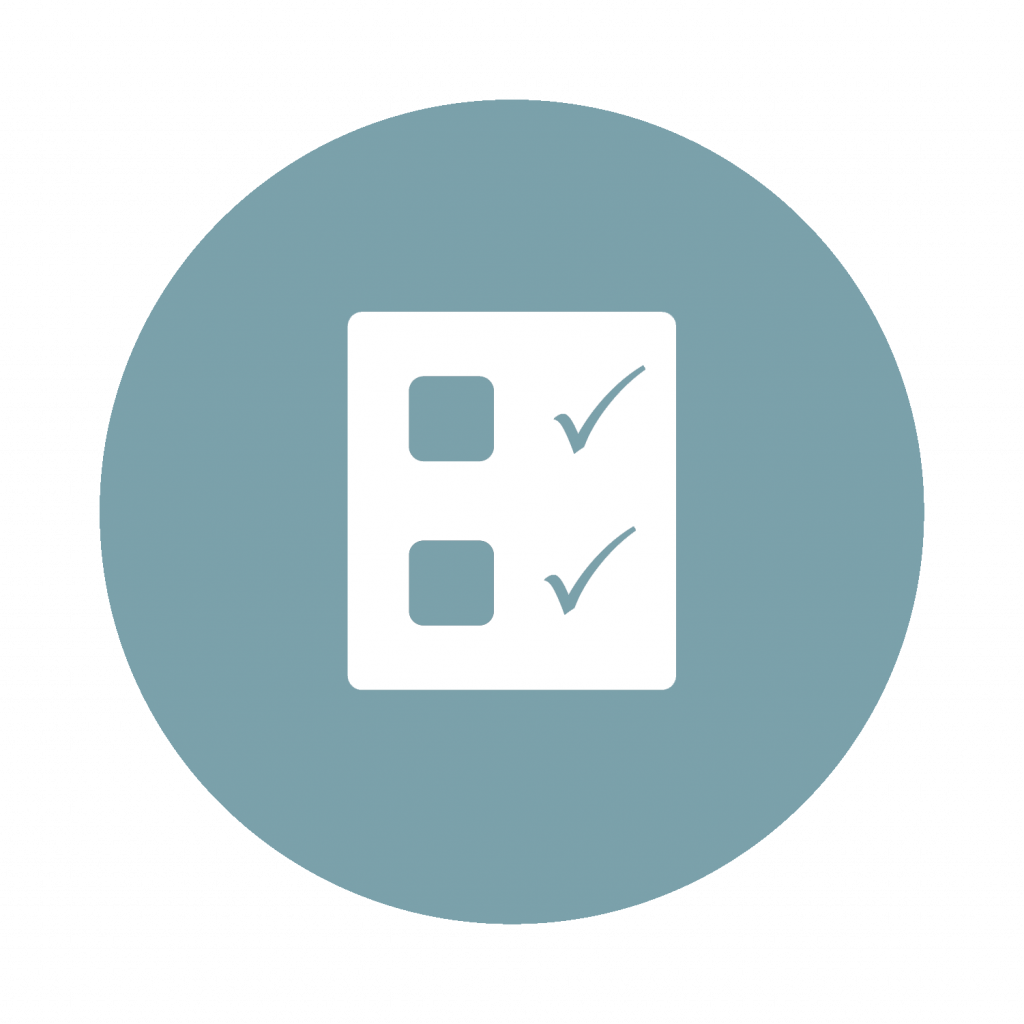9.5 Key Takeaways, Knowledge Check and Key Terms
Key Takeaways
 In this chapter, we learned that:
In this chapter, we learned that:
- Personality encompasses a person’s relatively stable feelings, thoughts, and behavioral patterns.
- The Big 5 personality traits are summarized by the acronym OCEAN. They are Openness, Contentiousness, Extraversion, Agreeableness, and Neuroticism. Neuroticism is associated with poor emotion regulation while individuals who score high in contentiousness, openness and agreeableness may be more likely to engage in positive conflict.
- Cognitive dispositions (general patterns of mental processes that impact how people respond and react to the world around them) discussed in this chapter were locus of control, cognitive complexity, authoritarianism, dogmatism, emotional intelligence, and AO. Social-personal dispositions (general patterns of mental processes that impact how people socially relate to others or view themselves) discussed in this chapter were loneliness, depression, self-esteem, narcissism, Machiavellianism, empathy, and self-monitoring. These ways of being impact our relationships and ability to engage in conflict management.
- Workplace deviance involves the voluntary behavior of organizational members that violates significant organizational norms and practices or threatens the wellbeing of the organization and its members.
- Harden Fritz categorized six types of problematic bosses: different, okay good old boy/girl, toxic, self-centered taskmaster, and intrusive harasser.
- First, the different boss is someone a subordinate sees as distractingly different from them as a person.
- Second, the good old boy/girl boss considers the “old ways of doing things” as best – even when they’re problematic.
- Third, the OK boss kay and average in just about every way possible coasting towards retirement.
- Fourth, the toxic boss is seen as unethical, obnoxious, and unprofessional by their subordinates.
- Fifth, the self-centered taskmaster is entirely concerned with completing tasks with no concern for developing relationships with their followers.
- Lastly, the intrusive harasser boss tends to be highly interfering and often wants to get caught up in their subordinates’ personal and professional lives.
- Harden Fritz categorized eight types of problematic coworkers:
- adolescent (wants to be the center of attention and get nothing done),
- bully (is overly demanding of their peers and takes credit for their work),
- mild annoyance (they engage in disruptive behaviors regularly but not to a drastic degree),
- independent self-promoter (likes to toot their own horn),
- pushy playboy/playgirl (pushes people into doing things for them),
- independent other (perceived as distinctly different from their coworkers),
- soap opera star (loves to gossip and be in the middle of all of the workplace drama), and
- the abrasive, incompetent harasser (is highly uncivil in the workplace with a special emphasis in sexually harassing behavior).
- Harden Fritz categorized five types of problematic subordinates: the okay subordinate, the abrasive harasser, the bully, the different other, and the incompetent renegade.
- First, the okay substitute is a follower who is not stellar or awful, just very much middle of the road.
- Second, the abrasive harasser is an individual who tends to be someone who needs counseling regularly about what constitutes sexual harassment.
- Third, the bully is someone who bosses their peers around, usurps authority, and engages in hypercompetitive behavior when competition is not necessary (all signs of someone who is deeply insecure).
- Fourth, the different other is a follower who is perceived as distinctly different from their supervisor.
- Finally, the incompetent renegade is ethically incompetent and views themselves as above the law within the organization.
- Using the ABC model, we discussed three basic forms of conflict management: Avoider attempt to avoid a conflict altogether or leave the conflict field. Battlers have a distributive conflict style and desire a win-lose orientation. Collaborators engage in integrative conflict and attempt to find a mutually beneficial solution to a problem.
Knowledge Check
 Review your understanding of this chapter’s key concepts by taking the interactive quiz below.
Review your understanding of this chapter’s key concepts by taking the interactive quiz below.
Key Terms
 Key terms from this chapter include:
Key terms from this chapter include:
- Affective orientation
- Avoiders
- Authoritarianism
- Battlers
- Big 5 personality traits
- Cognitive complexity
- Cognitive dispositions
- Collaborators
- Depression
- Deviant workplace behaviour
- Dogmatism
- Emotional loneliness
- Machiavellianism
- Narcissism
- Personality
- Right-wing authoritarians (RWAs)
- Self-esteem
- Self-monitoring
- Social loneliness
- Social-personal dispositions
Affective orientation is “the degree to which people are aware of their emotions, perceive them as important, and actively consider their affective responses in making judgments and interacting with others” (Booth-Butterfield & Booth-Butterfield, 1994, p. 332). See Section 9.2 Cognitive and Personal-Social Dispositions
Avoiders - in the ABC model of conflict management, avoiders are individuals who tend to use avoidance as their preferred method of conflict management. Common avoidance tactics used during conflict are summarized in Table 9.1. See Section 9.3 ABCs of Conflict
Authoritarianism is a form of social organization where individuals favor absolute obedience to authority (or authorities) as opposed to individual freedom. See Section 9.2 Cognitive and Personal-Social Dispositions
Battlers - in the ABC model of conflict management, battlers are individuals who engage in distributive approaches to conflict and value "winning" the conflict, even if it is at the cost of their relationships. Common strategies used during conflict by battlers are summarized in Table 9.2. See Section 9.3 ABCs of Conflict
Big 5 personality traits:
Openness is the degree to which a person is curious, original, intellectual, creative, and open to new ideas.
Conscientiousness refers to the degree to which a person is organized, systematic, punctual, achievement-oriented, and dependable
Extraversion is the degree to which a person is outgoing, talkative, sociable, and enjoys socializing
Agreeableness is the degree to which a person is affable, tolerant, sensitive, trusting, kind, and warm.
Neuroticism refers to the degree to which a person is anxious, irritable, temperamental, and moody.
Cognitive complexity - According to John Daly (2002), “cognitive complexity has been defined in terms of the number of different constructs an individual has to describe others (differentiation), the degree to which those constructs cohere (integration), and the level of abstraction of the constructs (abstractness)”. See Section 9.2 Cognitive and Personal-Social Dispositions
Cognitive dispositions refer to general patterns of mental processes that impact how people respond and react to the world around them. These dispositions (or one’s natural mental or emotional outlook) take on several different forms. This chapter examines four cognitive dispositions identified by John Daly (2011): locus of control, cognitive complexity, authoritarianism/dogmatism, and emotional intelligence. See Section 9.2 Cognitive and Personal-Social Dispositions
Collaborators - in the ABC model of conflict management, collaborators are individuals who engage in a range of collaborating choices, from being completely collaborative in an attempt to find a mutually agreed upon solution, to being compromising when you realize that both sides will need to win and lose a little to come to a satisfactory solution. In both cases, the goal is to use prosocial communicative behaviors in an attempt to reach a solution that works for everyone. Common strategies used by collaborators are summarized in Table 9.3. See Section 9.3 ABCs of Conflict
Depression is a psychological disorder characterized by varying degrees of disappointment, guilt, hopelessness, loneliness, sadness, and self-doubt, all of which negatively impact a person’s general mental and physical wellbeing. See Section 9.2 Cognitive and Personal-Social Dispositions
Deviant workplace behaviour is defined as voluntary behavior of organizational members that violates significant organizational norms and practices or threatens the wellbeing of the organization and its members. See Section 9.3 Types of Deviant Workplace Behaviour
Dogmatism is defined as the inclination to believe one’s point-of-view as undeniably true based on faulty premises and without consideration of evidence and the opinions of others. See Section 9.2 Cognitive and Personal-Social Dispositions
Emotional loneliness results when an individual feels that they do not have an emotional connection with others. See Section 9.2 Cognitive and Personal-Social Dispositions
Machiavellianism- named after the 16th century author Nicolo Machiavelli. In modern times, an individual with Machiavellian tendencies has four characteristics according to Christie and Gies. They are a lack of affect; lack of concern for others; rational view of others and focus on short-term goals. See Section 9.2 Cognitive and Personal-Social Dispositions
Narcissism is defined a personality trait characterized by overly high self-esteem, self-admiration, and self-centeredness. See Section 9.2 Cognitive and Personal-Social Dispositions
Personality encompasses a person’s relatively stable feelings, thoughts, and behavioral patterns. See Section 9.1 Personality
Right-wing authoritarians (RWAs) tend to have three specific characteristics: RWAs believe in submitting themselves to individuals they perceive as established and legitimate authorities. RWAs believe in strict adherence to social and cultural norms. RWAs tend to become aggressive towards those who do not submit to established, legitimate authorities and those who violate social and cultural norms. See Section 9.2 Cognitive and Personal-Social Dispositions
Self-esteem consists of your sense of self-worth and the level of satisfaction you have with yourself; it is how you feel about yourself. A good self-image raises your self-esteem; a poor self-image often results in poor self-esteem, lack of confidence, and insecurity. See Section 9.2 Cognitive and Personal-Social Dispositions
Self-monitoring proposes that individuals differ in the degree to which they can control their behaviors following the appropriate social rules and norms involved in interpersonal interactions. See Section 9.2 Cognitive and Personal-Social Dispositions
Social loneliness results from a lack of a satisfying social network. See Section 9.2 Cognitive and Personal-Social Dispositions
Social-personal dispositions refer to general patterns of mental processes that impact how people socially relate to others or view themselves. Dispositions discussed in the chapter include loneliness, depression, self-esteem, narcissism, Machiavellianism, empathy, and self-monitoring. See Section 9.2 Cognitive and Personal-Social Dispositions

